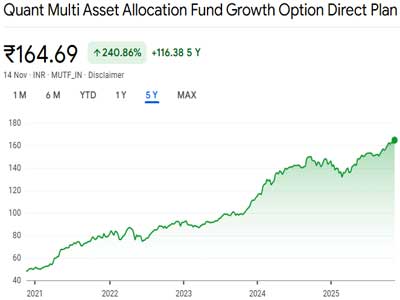The entire country is abuzz nowadays, partly due to political heat and partly due to an unexpected temperature spike last month! At this moment, everyone shares the same concern: Will the monsoon from the Arabian Sea make a timely entry into India?
The year 2025 has brought a ray of hope for India, as the southwest monsoon is likely to arrive ahead of schedule, promising much-needed relief across the nation. The Indian Meteorological Department has released its initial forecast, indicating that the life-saving rains will begin on time. The first showers are expected over the Andaman and Nicobar Islands around May 10 (±2 days), nearly ten days earlier than usual. Subsequently, the monsoon is anticipated to reach Kerala by May 24 (±2 days), with the latest possible date being May 31 (±4 days), suggesting an early onset by about a week compared to the normal date of June 1.
The IMD has also detailed the monsoon’s progression across key regions. Mumbai and Pune are likely to witness rainfall between June 8 and 11, with a 92 per cent probability. The National Capital Region is expected to receive its first monsoon showers by the end of June, with the rains spreading across the entire country by July 15.
In terms of total rainfall, the IMD has predicted an ‘above-average’ monsoon at 105 per cent of the Long Period Average for the June-September period. This optimistic forecast has been corroborated, with minor variations, by private weather agency Skymet, which expects a ‘normal’ monsoon at around 103 per cent of LPA.
However, the geographical distribution of rainfall this year is expected to be uneven. States like Maharashtra, Madhya Pradesh, Kerala, and coastal Karnataka are likely to receive above-normal rainfall, which is excellent news for farmers and water reservoirs in these regions. In contrast, northeastern India, the high-altitude regions of Ladakh, and Tamil Nadu may experience below-normal rainfall. Farmers in these areas are advised to adopt efficient water management and contingency crop planning to mitigate water scarcity.
Several favourable climatic factors are contributing to the early and robust monsoon in 2025. The El Niño Southern Oscillation is currently in a neutral phase, historically associated with healthy monsoon activity in the Indian subcontinent. Additionally, mild La Niña-like conditions in the Bay of Bengal are expected to create low-pressure systems, crucial for driving monsoon winds and enhancing rainfall.
Further boosting this optimistic outlook, Eurasia recorded below-normal snowfall between January and March. This is significant because reduced snowfall in this region has been linked to stronger summer monsoons in India. The alignment of these climatic indicators paints a promising picture for the upcoming rainy season.
The monsoon, often referred to as the ‘lifeline of agriculture’, holds immense importance as over half of India’s farmland depends on seasonal rains. Key crops like rice, sugarcane, cotton, and pulses rely heavily on timely and adequate monsoon rains. A good monsoon in 2025 is expected to significantly boost agricultural output, increasing incomes and improving the lives of millions of farmers. This, in turn, will positively impact fast-moving consumer goods, tractor sales, and the automobile industry, contributing to economic growth.
Beyond agriculture, a strong monsoon will replenish vital water reserves, raising reservoir levels and groundwater tables. This will help alleviate water shortages, particularly in regions that have faced drought-like conditions in recent years, ensuring better water security for both farming and domestic needs.
Despite the optimistic forecast, weather experts caution that unexpected developments, such as intensified cyclonic activity in the Arabian Sea or the Bay of Bengal, could disrupt the monsoon’s normal progression. These weather anomalies may lead to heavy rainfall and flooding in some areas while temporarily weakening the monsoon’s intensity elsewhere. The IMD will release its final and detailed monsoon forecast on May 15, providing a more comprehensive outlook.
Overall, the 2025 monsoon brings positive signals for India, especially for its agricultural sector and water management. While most of the country anticipates abundant rainfall, farmers in northeastern states and Tamil Nadu are advised to prepare for below-normal rains and implement efficient irrigation strategies to safeguard their crops. The nation eagerly awaits the arrival of the 2025 monsoon, heralding progress and relief.
Over the past decade, the accuracy of India’s monsoon forecasts has significantly improved. However, climate change has added complexity to predictions. Since 2014, the IMD has used both dynamic and statistical models for forecasting. Advances in supercomputing have enhanced the precision of dynamic models, while statistical models have become less reliable amid rapidly changing weather patterns.
On the other side, in 2014-15, the IMD predicted a normal monsoon, but El Niño caused droughts in several regions. Forecasts were relatively better between 2016 and 2018, though unexpected rainfall deficits occurred in 2018. In 2019, actual rainfall varied considerably across regions. From 2020 to 2023, machine learning and improved data technologies strengthened forecasts, yet the monsoon’s growing unpredictability posed challenges. According to the IMD, the accuracy of monsoon forecasts in recent years has reached about 80 per cent, offering some reassurance.


















Related Items
How political parties became corporates…!
Bihar: In whose favour the political wind blowing…?
Time for the political class to wake up...